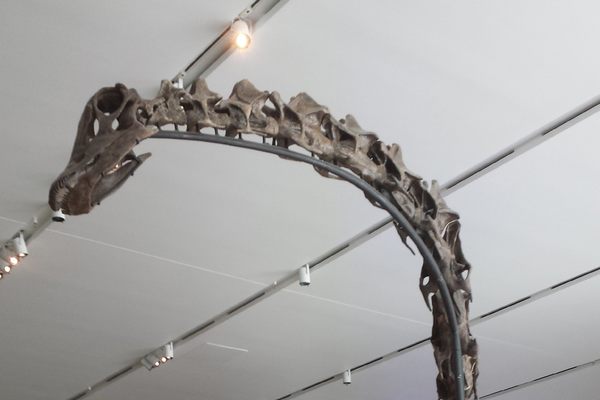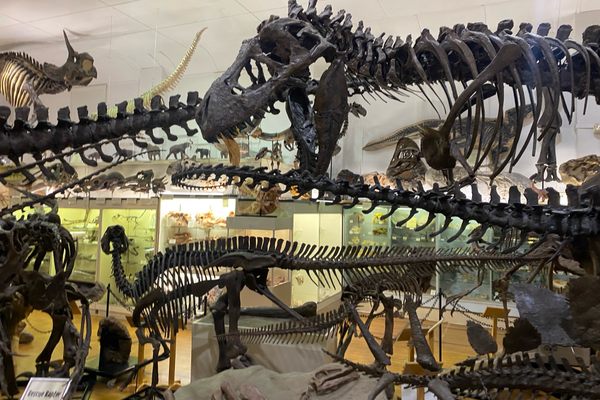About
While visiting a friend in Haddonfield, New Jersey, in the spring of 1858, amateur naturalist William Parker Foulke heard that local workmen digging in a nearby marl pit had unearthed several gigantic bones. Organizing his own team of diggers to investigate, Foulke soon discovered the fossilized partial skeleton of a bipedal creature with features similar to both a bird and a reptile.
The strange prehistoric beast was later identified as a dinosaur by Joseph Leidy, a naturalist from the nearby Academy of Natural Sciences of Philadelphia (today known as the Academy of Natural Sciences of Drexel University). Leidy gave the fossil the taxonomic name Hadrosaurus foulkii, after its discoverer.
Prior to this discovery, dinosaurs were known only from scattered bone fragments and teeth. Foulke’s Hadrosaurus gave scientists a far better understanding of what the “ruling reptiles’ actually looked like—including the fact that many of them were bipedal. The find also helped cement paleontology as a formal science rather than as a hobby of upper-class collectors and naturalists, as it had previously been viewed.
In 1868, the bones from the marl pit were mounted on an iron lattice at the Academy of Natural Sciences by British model-maker Benjamin Waterhouse Hawkins, designer of the famous dinosaur statues at the Crystal Palace at Hyde Park in London. Hadrosaurus was the first dinosaur skeleton ever mounted and it would prove incredibly popular. People came to the Academy from all over the U.S. and even from other countries just to see it.
Unfortunately, this popularity would not last. In later decades, Foulke’s Hadrosaurus skeleton would be overshadowed by bigger, more complete fossils from the American West such as Tyrannosaurus rex. The Haddonfield site where the bones had been dug up fell into obscurity until 1984 when Boy Scout Christopher Brees relocated the marl pit as part of a community service project. Through several small grants, Brees cleaned up the site at 697 Maple Avenue and erected a sculpted bronze plaque to commemorate the historic excavation.
Several years later, the town of Haddonfield erected a life-size statue of Hadrosaurus in the downtown area to celebrate their town’s role in paleontological history. A replica of the original Hadrosaurus skeleton is also displayed nearby at the Academy of Natural Sciences of Drexel University.
Related Tags
Know Before You Go
The Hadrosaurus statue can be found a few blocks from the marl pit in downtown Haddonfield at 37e Lantern Lane. The Academy of Natural Sciences of Drexel University, where the Hadrosaurus bones are housed and where a replica is on display, is located a few miles away at 1900 Benjamin Franklin Pkwy in Philadelphia.
Published
April 12, 2019





































